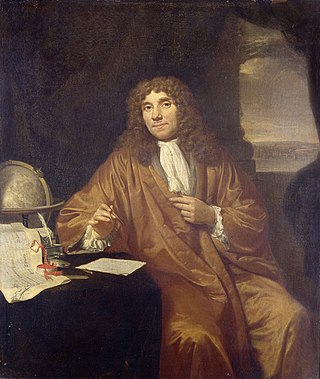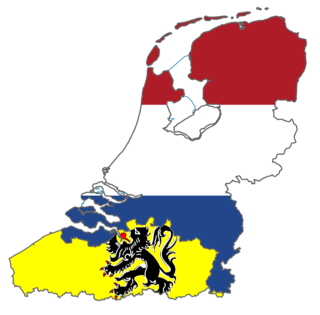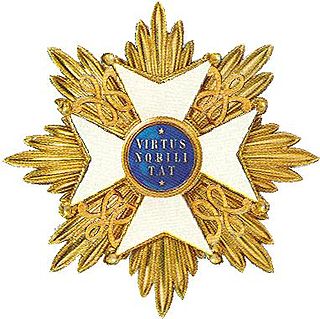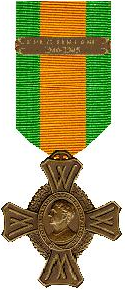Related Research Articles

"Wilhelmus van Nassouwe", usually known just as "Wilhelmus", is the national anthem of both the Netherlands and the Kingdom of the Netherlands. It dates back to at least 1572, making it the oldest national anthem in use today, provided that the latter is defined as consisting of both a melody and lyrics. Although "Wilhelmus" was not recognized as the official national anthem until 1932, it has always been popular with parts of the Dutch population and resurfaced on several occasions in the course of Dutch history before gaining its present status. It was also the anthem of the Netherlands Antilles from 1954 to 1964.

Antonie Philips van Leeuwenhoek was a Dutch microbiologist and microscopist in the Golden Age of Dutch science and technology. A largely self-taught man in science, he is commonly known as "the Father of Microbiology", and one of the first microscopists and microbiologists. Van Leeuwenhoek is best known for his pioneering work in microscopy and for his contributions toward the establishment of microbiology as a scientific discipline.

Catharina-Amalia, Princess of Orange is the heir apparent to the throne of the Kingdom of the Netherlands, which consists of the constituent countries of Aruba, Curaçao, the Netherlands, and Sint Maarten.

Greater Netherlands is an irredentist concept which unites the Netherlands, Flanders, and sometimes Brussels. Additionally, a Greater Netherlands state may include the annexation of the French Westhoek, Suriname, formerly Dutch-speaking areas of Germany and France, or even the ethnically Dutch and/or Afrikaans-speaking parts of South Africa, though such variants are mostly limited to far-right groups. A related proposal is the Pan-Netherlands concept, which includes Wallonia and potentially also Luxembourg.
Cornelis Bernardus van Niel was a Dutch-American microbiologist. He introduced the study of general microbiology to the United States and made key discoveries explaining the chemistry of photosynthesis.
The Diamond Film is a film award recognising domestic box office achievements in the Netherlands. The Diamond Film is awarded to films from the Netherlands once they have sold 1,000,000 cinema tickets or more during the original circulation. The award is initiated by the Netherlands Film Festival and the Netherlands Film Fund in addition to the Golden Film for 100,000 visitors, the Platinum Film for 400,000 visitors, and the Crystal Film for 10,000 visitors of a documentary film.

In the Dutch honours system, most orders are the responsibility of ministers of the Netherlands Government. The house orders, however, are awarded at the discretion of the Dutch monarch alone.

Olfert Dapper was a Dutch physician and writer who wrote books about world history and geography although he never travelled outside the Netherlands.

In the Netherlands, the municipal council is the elected assembly of the municipality. Its main role is laying down the guidelines for the policy of the municipal executive and exercising control over its execution by the mayor and aldermen.

Anthonie "Anton" Koolhaas was a Dutch journalist, novelist, and scenario writer.

Jillian Fiona Banfield is professor at the University of California, Berkeley with appointments in the Earth Science, Ecosystem Science and Materials Science and Engineering departments. She leads the Microbial Research initiative within the Innovative Genomics Institute, is affiliated with Lawrence Berkeley National Laboratory and has a position at the University of Melbourne, Australia. Some of her most noted work includes publications on the structure and functioning of microbial communities and the nature, properties and reactivity of nanomaterials.

Simon Berman was the mayor of Kwadijk, Middelie, Warder, Schagen, Bedum, and Alblasserdam in the Netherlands. He was the first mayor of Kwadijk, Middelie, and Warder to actually live in one of those villages. As a popular mayor of Schagen, he handled a double murder case that drew national media attention and advanced a professional school and regional light rail and canals. In Alblasserdam, he addressed the local impacts of World War I. Berman is also known for his association with Christian anarchism.
Anthony van der Eb was a Dutch civil servant, who made a career in the administration on the Dutch Gold Coast.

Christianus Carolus Henricus van der Aa was a Lutheran pastor in Haarlem and secretary of the Royal Holland Society of Sciences and Humanities.

De Vloek was a squatted, self-managed social centre in The Hague, the Netherlands, between 2002 and 2015. Located on Hellingweg 127 in Scheveningen, beside the North Sea, the squat hosted workplaces, living spaces, a venue, and a vegan restaurant. The local council tolerated the occupation until 2014, when it decided to sell the building. A political struggle over the eviction began; some political parties supported the squatters and the Scheveningen Pier was briefly occupied as a protest action. A deal was made for the squatters to move to a former school building and the Vloek was eventually evicted in September 2015.
Hendrik Klaas Aldert"Henk"Visser was a Dutch pediatrician. He was professor of pediatrics at the Erasmus University Rotterdam and the Erasmus MC between 1967 and 1995.

VV Noordscheschut is a Dutch association football club from Noordscheschut, Netherlands. Its home ground is Sportpark De Meulewieke. The club colors are blue-white.

Takdier Boys–Amardeep Combinatie 1990 is an association football club from The Hague, Netherlands. In 2020–21, its Sunday first squad plays for the first time in the Hoofdklasse and Saturday first squad plays in the Vierde Klasse.

The ICT Association of Suriname is a Surinamese trade association for companies whose core business is related to Information technology and computing. Members are required to be registered with the Suriname Chamber of Commerce and Industry.

The War Commemorative Cross is a military award of the Netherlands. The medal was established to commemorate service to the Kingdom of the Netherlands during World War II. The medal was established on 16 March 1944 by royal decree of Queen Wilhelmina.
References
- ↑ Harting, P. (1876). "Mikroskopische wezens, door Antony van Leeuwenhoek". Google books (in Dutch). Martinus Nijhoff, van Hengel en Eeltjes. Archived from the original on 2023-11-04. Retrieved 2023-11-04.
[...] een fonds bijeen te brengen voor een blijvend gedenkteeken ter eere van de nagedachtenis van LEEUWENHOEK, bestaande in eene gouden medaille, die LEEUWENHOEK-MEDAILLE zal genoemd en om de tien jaar aan dengene, Nederlander of Buitenlander, zal worden uitgereikt, die geacht zal worden in dat tijdsverloop, of vroeger, het meest ter vermeerdering onzer kennis der microscopische wezens te hebben bijgedragen. ([...] to raise a fund for a permanent memorial in honor of the memory of LEEUWENHOEK, consisting of a gold medal, which will be called LEEUWENHOEK MEDAL and will be awarded every ten years to the person, Dutch or Foreigner, who will be considered that lapse of time, or earlier, has contributed most to our knowledge of microscopic beings.)
- ↑ "Leeuwenhoek Medal". KNVM. Archived from the original on 6 October 2014. Retrieved 10 January 2015.
- ↑ Microbiologie, Koninklijke Nederlandse Vereniging voor. "van Leeuwenhoek Medal 2023". KNVM. Retrieved 2023-02-13.
- ↑ "Previous awardees". KNVM. Archived from the original on 2023-06-07. Retrieved 2023-11-04.
